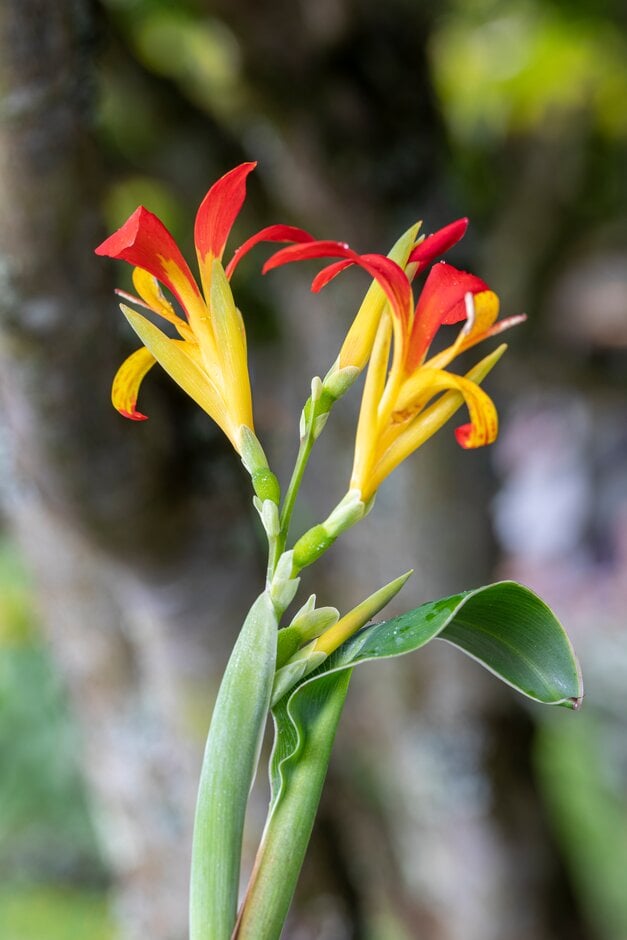Canna brasiliensis
Brazilian canna
Clump-forming perennial with broadly lance-shaped, dark green leaves often tinged with bronze. Clusters of bright red and yellow, or orange, iris-like flowers, 5-8cm across, are produced on upright stems up to 1.8m tall from mid-summer to autumn

Buy this plant
Size
Ultimate height
1.5–2.5 metresTime to ultimate height
2–5 yearsUltimate spread
0.1–0.5 metresGrowing conditions
Moisture
Moist but well–drained, Poorly–drainedpH
Acid, Alkaline, NeutralColour & scent
| Stem | Flower | Foliage | Fruit | |
| Spring | Green Bronze | |||
|---|---|---|---|---|
| Summer | Red Yellow Orange | Green Bronze | ||
| Autumn | Red Yellow Orange | Green Bronze | ||
| Winter |
Position
- Full sun
Aspect
South–facing or West–facing
Exposure
Sheltered Hardiness
H3Botanical details
- Family
- Cannaceae
- Native to GB / Ireland
- No
- Foliage
- Deciduous
- Habit
- Clump forming, Columnar upright
- Genus
Canna are rhizomatous herbaceous perennials with erect stems bearing ovate leaves, with showy flowers with showy petal-like staminodes and small, coloured petals and sepals, borne in racemes or panicles in summer and autumn
- Name status
Correct
- Plant range
- Tropical Americas
How to grow
Cultivation
Grow in a sheltered site in fertile soil in full sun, planting in early summer once frosts have passed. Water freely in dry weather and apply a high-potassium fertiliser monthly. Lift the rhizomes in autumn when frost blackens the foliage. Store over winter in barely moist, peat-free potting mix or leaf mould in frost-free conditions. In mild areas leave in the ground but cover with a dry mulch. See canna cultivation
Propagation
Propagate by seed (sown indoors), or propagate by division in early spring
Suggested planting locations and garden types
- City and courtyard gardens
- Cottage and informal garden
- Mediterranean climate plants
- Sub-tropical
- Patio and container plants
- Bedding
- Conservatory and greenhouse
- Flower borders and beds
- Wall side borders
Pruning
Remove dead flowers individually to promote continued flowering. Leave to die back in autumn
Pests
May be susceptible to glasshouse red spider mite, slugs and caterpillars
Diseases
May be susceptible to canna viruses
Get involved
The RHS is the UK’s gardening charity, helping people and plants to grow - nurturing a healthier, happier world, one person and one plant at a time.